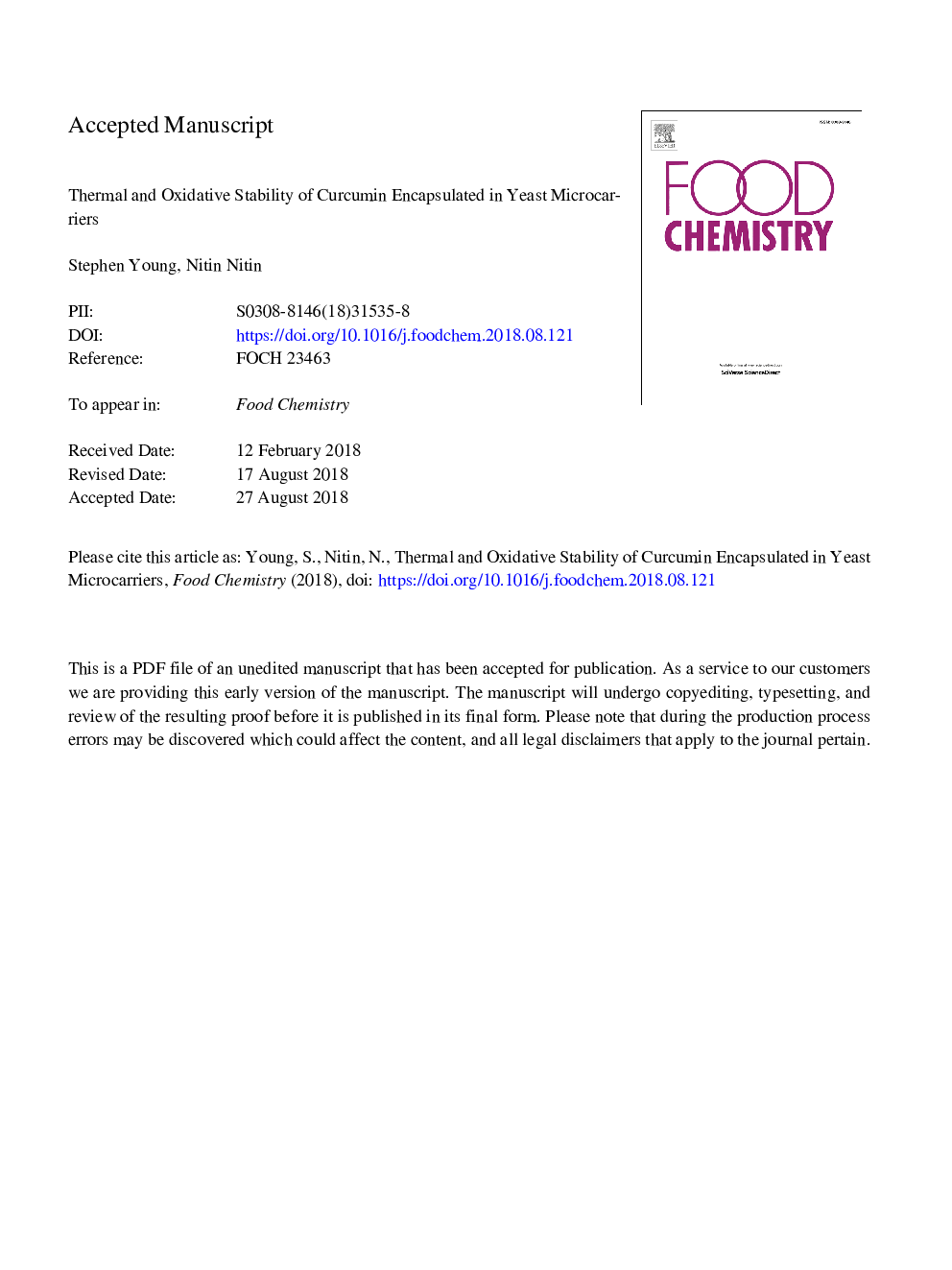| Article ID | Journal | Published Year | Pages | File Type |
|---|---|---|---|---|
| 10154399 | Food Chemistry | 2019 | 24 Pages |
Abstract
This study evaluated the effects of the intracellular constituents of yeast microcarriers on the thermal and oxidative stability of encapsulated curcumin. Intact yeast cells and plasmolyzed yeast, i.e. yeast cell wall particles (YCWPs), of Saccharomyces cerevisiae were compared to Pickering emulsions in this study. Peroxyl radicals were generated with 2,2â²-azobis(2-methylpropionamidine) dihydrochloride (AAPH) and thermal pasteurization was carried out at 70â¯Â°C and 90â¯Â°C. Analysis of variance (ANOVA) and kinetic modeling were also employed. YWCPs provided significantly higher thermal stability to curcumin (91.8â¯Â±â¯1.0% and 99.7â¯Â±â¯3.1% at 70â¯Â°C and 90â¯Â°C respectively) compared to intact cells and Pickering emulsions; these results in YCWPs were attributed to the lack of native subcellular structures which are prone to denaturation and subsequently release curcumin. Native yeast, however, provided significantly higher oxidative stability to encapsulated curcumin. This oxidative stability in intact cells was ascribed to endogenous, cytoplasmic antioxidants and confirmed with ferric ion reducing antioxidant power (FRAP) assays.
Keywords
Related Topics
Physical Sciences and Engineering
Chemistry
Analytical Chemistry
Authors
Stephen Young, Nitin Nitin,
